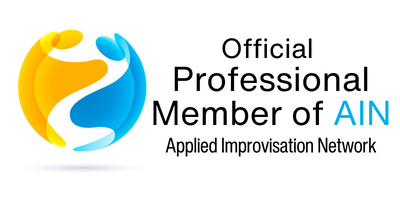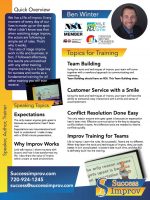Building Connections: Ten Improv Methods for More Engaging Conversations
In an era of digital communication and fleeting interactions, the art of conversation has become more vital yet challenging than ever. Whether you’re networking, nurturing friendships, or simply trying to make a meeting more dynamic, engaging conversations are essential. Improv, an artistic discipline rooted in spontaneous storytelling, offers a wealth of techniques to enhance your conversational skills. Here are ten improv methods that can help you build more engaging connections.
1. Yes, And…
The cornerstone of improv, "Yes, And…" is a powerful technique that involves accepting what your conversation partner says (yes) and then building on it (and). It encourages open-mindedness and creativity, turning every dialogue into a collaborative exploration. Psychology Today discusses how this approach can significantly improve communication skills by fostering a positive exchange of ideas.
2. Active Listening
Improv requires performers to listen actively—not just to hear, but to truly understand and respond to their partners. Active listening involves focusing entirely on the speaker, observing body language, and avoiding the urge to interrupt. Forbes highlights active listening as a critical skill that can profoundly enhance personal and professional relationships.
3. Building on Ideas
Similar to "Yes, And…", building on ideas emphasizes collaboration. Instead of merely agreeing, try to contribute something meaningful that expands or enhances the initial idea. This method keeps conversations dynamic and productive, as seen in the practices taught by Second City Works.
4. Embrace Mistakes
Improv is forgiving of errors, viewing them as opportunities rather than failures. Approaching conversations with an acceptance of mistakes encourages openness and humor, which can ease tension and foster trust. The Harvard Business Review details how embracing mistakes can lead to more authentic and creative dialogues.
5. Be Present
Improv actors need to be fully present to respond effectively to unscripted changes. Applying this to conversations means giving your undivided attention without distractions. MindTools offers insights into how being genuinely present can enhance the quality and depth of your interactions.
6. Adaptability
Improv teaches performers to adapt swiftly to new information and changing contexts. This flexibility is crucial in conversations, allowing you to navigate unexpected turns and maintain engagement smoothly. Inc.com discusses how improv’s emphasis on adaptability can boost emotional intelligence—a key ingredient in effective communication.
7. Ask Open-ended Questions
Encourage expansive responses by asking open-ended questions. This approach—central to storytelling in improv—invites more detailed and thoughtful replies. Great conversation often begins with how you ask your questions, as explained by The Good Men Project.
8. Emotional Awareness
Improv involves not just words but emotions, and understanding the emotional context of a conversation can significantly improve empathy and connection. Emotional awareness can transform the depth of your conversations, as showcased by Greater Good Science Center.
9. Storytelling
The ability to weave stories into conversations is a skill often honed in improv. Stories can captivate attention and make interactions memorable. Practicing storytelling in your conversations can leave a lasting impact, as detailed in The Atlantic.
10. Empathy
Above all, improv fosters empathy by encouraging you to view situations from multiple perspectives. By truly understanding others’ viewpoints, you create more meaningful and engaging conversations. Business Insider explores how getting into someone else’s shoes can transform your conversational abilities.
By incorporating these improv methods into your daily interactions, you can create more engaging, dynamic, and meaningful conversations. These techniques foster a sense of connection that transcends mere dialogue, building bridges of understanding and collaboration.


